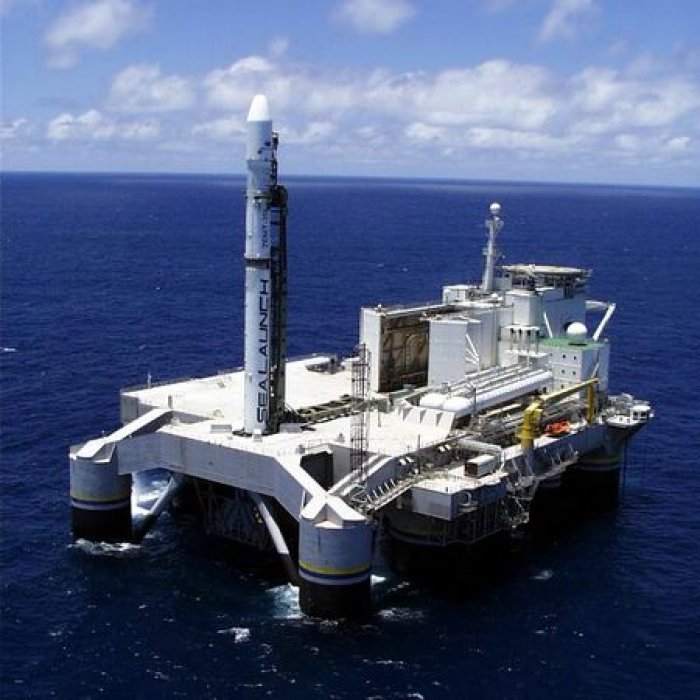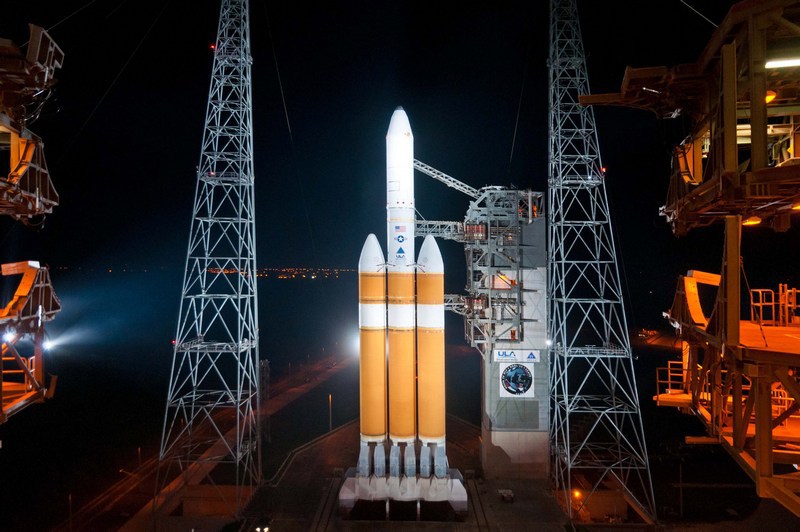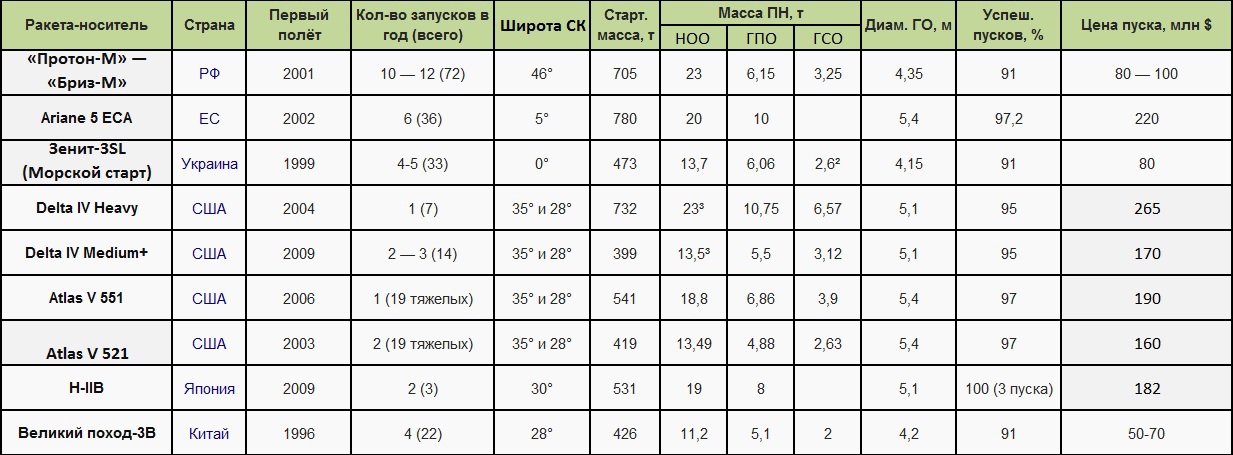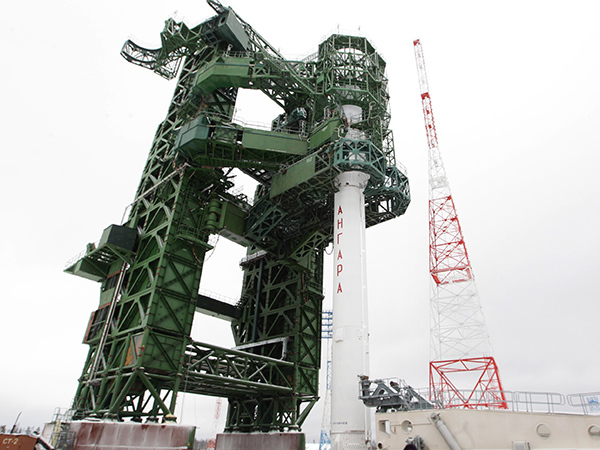Why, why, our Protons do not fly
I think everyone already knows about the next crash of the Proton-M launch vehicle with Russian communications satellites on board. The Express-AM4R satellite was lost, which, ironically, was to replace the AM4 Express satellite that did not reach the calculated orbit on August 18, 2011. A new accident occurred on May 16, 2014 - at the 540th second of the flight, the connection was lost with the carrier, an emergency shutdown of the engines occurred, and the head unit was not separated from the rocket.

Puzzled by the question of why accidents happen precisely to Russian satellites, I decided to explore this topic a little.
The first thought that comes to mind is that modern Russian engineers lost theirpolymers and the necessary skills and organization of work, compared to the Soviet period.
')
However, referring to Wikipedia ( link 1 and link 2 ), you may find that in our time the percentage of failures is almost the same as the Soviet one (in both cases, the percentage of successful launches is 89%). A respected darkalexey already quite a while even made a more detailed post about it. Yes, there were significantly more accidents at the beginning of the Proton flights, but “in the hospital as a whole” there is parity.
Thus, I believe, there is no difference in what social / economic way the launches were made.
The second thought, maybe 89% of successful starts is not so little? And what about ourfriends competitors?
The first competitor is the European launch vehicle Ariane-5 .

The reliability of the Ariane-5 starts is an impressive 97%. But at the same time, the launch cost is twice as high - about $ 220 million. There are 5-6 launches per year.
The second competitor is Zenit-3SL (Sea Launch) .

Reliability - similar to Proton 89-91%. The cost is also comparable, about $ 80 million. Four to five launches per year.
Competitors from the USA - Delta IV and Atlas V.


Reliability coefficient is 95-97%. The launch cost ranges from an impressive $ 160 million for the Atlas V 521 to a reported $ 265 million for the Delta IV Heavy. In the year the Americans launch only 5-6 ships of both types.
Thus, we can make a banal conclusion that the reliability of launches directly correlates with their cost.
Wikipedia has a great tablet by Proton’s competitors. I took the liberty to edit it a bit:

In all, Atlas IV has 45 successful launches, but half of them fall on the launch of light options 401 and 501. Eliminating them, we get a figure of 19 total launches for heavy modifications. Similarly, the situation with the Delta IV, of the 25 total launches, the share of heavy and medium accounted for 21.
The basis of the issue on accidents with Protons is that many accidents are associated with the launches of various Russian high-tech communications and navigation satellites. Which, in theory, can compete with foreign satellites. Here is a brief list of failed launches lately:
May 6, 2014 Express AM4P (Communication satellites)
July 2, 2013 Glonass-M (Navigation satellites)
August 6, 2012 Express MD2 (Communication satellites)
August 18, 2011 Express AM4 (Communication Satellite)
December 5, 2010 Glonass-M (Navigation satellites)
It would seem that it can be argued that insidious saboteurs sneaked into the very center of the Russian cosmonautics and sabotage the launches of the Russian units.
But "not so simple." I liked this opinion , which, by the way, I met a respected Zelenyikot in LJ:

Proton is on the heels of a promising development of the private American corporation “SpaceX” Falcon 9. Since 2010, there have been only 9 launches, of which 1 is partially unsuccessful. The launch cost is estimated at $ 49.9 million to $ 56 million, depending on the load. But at the same time, the load itself is 13 tons for a low reference orbit (versus 23 tons for the Proton) and 4.8 tons (versus 6.15 tons for the Proton) for a geo-transition orbit. The heavy version of Falcon 9 hasn't even flown yet.

Proton itself is the “outgoing” booster. In place of him is Angara. Angara is a modular rocket, i.e. Depending on the required load, there are 8 modifications of PH with a mass output from 2 to 50 tons for a low reference orbit. At the same time, it is alleged that the complex will be fully designed and manufactured by the cooperation of Russian enterprises located in Russia. The main launch point will also be the fully Russian cosmodrome Plesetsk. The first launch of the Angara launch vehicle was planned for the year 2005 from the Plesetsk cosmodrome. But then it was repeatedly postponed: for 2011, for 2012, 2013, and now for 2014. At the moment it is the ninth transfer of the first launch of the launch vehicle. Dmitry Rogozin reported back in 2013 the following dates for the launch of a light rocket - May 2014, heavy - the end of November 2014. We'll see, run or not. It is believed that some of the parts for the Angara are still produced in Ukraine. In this case, we will see the start of the Angara soon.
Thus, it can be said that the quality of flights is greatly influenced by the chronic under-financing of Russian launches than by mythical saboteurs. Moreover, quite recently, the Proton was successfully launched a specific Russian military communications satellite.

I will not predict anything, since I am not professionally in the field of space. I hope that really true “financial” measures will be taken after this accident, and not “personnel punitive”. Also I will be glad to any additions \ clarifications to the article.

Puzzled by the question of why accidents happen precisely to Russian satellites, I decided to explore this topic a little.
Version number one - crooked hands
The first thought that comes to mind is that modern Russian engineers lost their
')
However, referring to Wikipedia ( link 1 and link 2 ), you may find that in our time the percentage of failures is almost the same as the Soviet one (in both cases, the percentage of successful launches is 89%). A respected darkalexey already quite a while even made a more detailed post about it. Yes, there were significantly more accidents at the beginning of the Proton flights, but “in the hospital as a whole” there is parity.
Thus, I believe, there is no difference in what social / economic way the launches were made.
Version number two - maybe others have the same?
The second thought, maybe 89% of successful starts is not so little? And what about our
The first competitor is the European launch vehicle Ariane-5 .

The reliability of the Ariane-5 starts is an impressive 97%. But at the same time, the launch cost is twice as high - about $ 220 million. There are 5-6 launches per year.
The second competitor is Zenit-3SL (Sea Launch) .

Reliability - similar to Proton 89-91%. The cost is also comparable, about $ 80 million. Four to five launches per year.
Competitors from the USA - Delta IV and Atlas V.


Reliability coefficient is 95-97%. The launch cost ranges from an impressive $ 160 million for the Atlas V 521 to a reported $ 265 million for the Delta IV Heavy. In the year the Americans launch only 5-6 ships of both types.
Thus, we can make a banal conclusion that the reliability of launches directly correlates with their cost.
Wikipedia has a great tablet by Proton’s competitors. I took the liberty to edit it a bit:

In all, Atlas IV has 45 successful launches, but half of them fall on the launch of light options 401 and 501. Eliminating them, we get a figure of 19 total launches for heavy modifications. Similarly, the situation with the Delta IV, of the 25 total launches, the share of heavy and medium accounted for 21.
Back to the long-suffering
The basis of the issue on accidents with Protons is that many accidents are associated with the launches of various Russian high-tech communications and navigation satellites. Which, in theory, can compete with foreign satellites. Here is a brief list of failed launches lately:
May 6, 2014 Express AM4P (Communication satellites)
July 2, 2013 Glonass-M (Navigation satellites)
August 6, 2012 Express MD2 (Communication satellites)
August 18, 2011 Express AM4 (Communication Satellite)
December 5, 2010 Glonass-M (Navigation satellites)
It would seem that it can be argued that insidious saboteurs sneaked into the very center of the Russian cosmonautics and sabotage the launches of the Russian units.
But "not so simple." I liked this opinion , which, by the way, I met a respected Zelenyikot in LJ:
Significant role at startup is the pricing policy of the state.
IN THE WEST: The state always pays more than a commercial buyer. That is, just like that - for the state customer the price is higher. This is due to the risk. In the USA, for example, when a government purchases risk-related services, it is prohibited to buy commercial insurance (anti-corruption law). Therefore, the state customer “insures itself” by buying additional services - checks, tests, etc.
Example: The launch price of Falcon-9 for commercial customers = $ 56 million, and it is fixed - it does not depend on the type of satellite or the final orbit. But - two launches of state-owned satellites by Folkona have been already booked, and they will cost 87 million and 95 million. . The state pays more.
IN RUSSIA: it's all the opposite. The state has a “boyar approach” to Khrunichev - they say, we allow you to trade with infidels — give us a discount for this. And bargaining launch almost at cost. The result is quite obvious - quality suffers.
Miser pays twice. Yes, and crying - also twice.

Proton is on the heels of a promising development of the private American corporation “SpaceX” Falcon 9. Since 2010, there have been only 9 launches, of which 1 is partially unsuccessful. The launch cost is estimated at $ 49.9 million to $ 56 million, depending on the load. But at the same time, the load itself is 13 tons for a low reference orbit (versus 23 tons for the Proton) and 4.8 tons (versus 6.15 tons for the Proton) for a geo-transition orbit. The heavy version of Falcon 9 hasn't even flown yet.

Proton itself is the “outgoing” booster. In place of him is Angara. Angara is a modular rocket, i.e. Depending on the required load, there are 8 modifications of PH with a mass output from 2 to 50 tons for a low reference orbit. At the same time, it is alleged that the complex will be fully designed and manufactured by the cooperation of Russian enterprises located in Russia. The main launch point will also be the fully Russian cosmodrome Plesetsk. The first launch of the Angara launch vehicle was planned for the year 2005 from the Plesetsk cosmodrome. But then it was repeatedly postponed: for 2011, for 2012, 2013, and now for 2014. At the moment it is the ninth transfer of the first launch of the launch vehicle. Dmitry Rogozin reported back in 2013 the following dates for the launch of a light rocket - May 2014, heavy - the end of November 2014. We'll see, run or not. It is believed that some of the parts for the Angara are still produced in Ukraine. In this case, we will see the start of the Angara soon.
Conclusion
Thus, it can be said that the quality of flights is greatly influenced by the chronic under-financing of Russian launches than by mythical saboteurs. Moreover, quite recently, the Proton was successfully launched a specific Russian military communications satellite.

I will not predict anything, since I am not professionally in the field of space. I hope that really true “financial” measures will be taken after this accident, and not “personnel punitive”. Also I will be glad to any additions \ clarifications to the article.
Source: https://habr.com/ru/post/223461/
All Articles